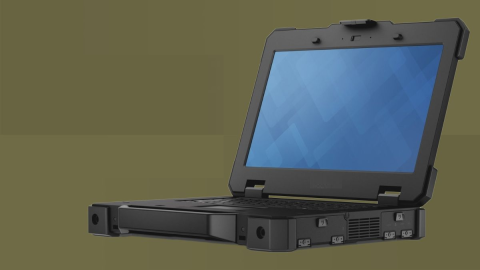How to Design Your PCB Test Coupon and What You Can Test

As the operating speed of components has increased, controlled impedance is becoming more common in digital, analog, and mixed-signal systems. If the controlled impedance value for an interconnect is incorrect, it can be very difficult to identify this problem during an in-circuit test. Minor mismatches may not cause a board to fail, but it can be difficult to pinpoint incorrect impedance as the cause of any test failure, especially if correct test points and test structures were not placed on a board to facilitate bare-board impedance tests.
Since the impedance depends on many parameters (trace geometry, laminate thickness, and laminate Dk value), thus the majority of PCBs are currently tested for controlled impedance. However, testing is normally performed on a PCB test coupon, which is manufactured on the same panel as the PCB (usually along an edge). If you want to get through board spins quickly and aid future designs, you might consider designing a test coupon and keeping it handy for future designs. In addition, providing your manufacturer with sufficient documentation on your proposed interconnect geometry is a huge help in ensuring your manufacturer creates the correct test coupon.
Separate or Integrated PCB Test Coupon?
The goal for any test coupon is to accurately catch the intended stackup of your board and facilitate accurate interconnect impedance testing. There are a number of ways to do this. In a test coupon for controlled impedance, the fabricator may leave some room on the panel edge to place some test structures for controlled impedance testing. Test coupons can also be selected from a vendor library, designed to industry standards (e.g., D coupons of IPC 2221B Appendix A), or generated using some software (e.g., the IPC 2221B Gerber Coupon Generator).
Sometimes, a test coupon is integrated into the actual PCB, rather than being created as a separate section on the same panel. In this case, the test coupon may not have the typical appearance one would expect from a generated or vendor-provided test coupon. Kella Knack describes the common test structures to include in a separate test coupon (if you’re a manufacturer) or directly on a prototype board (if you’re a designer) in a recent article.

Placing test structures directly on a board might seem like a waste of space, but it greatly aids in-circuit testing, both during prototyping and even during full-scale production. If you’re designing uncommon interconnect geometries, you need to assess impedance before producing at scale. It doesn’t hurt to design a single board with your interconnect designs and test them in-house. You’ll pay up front for a test board, but you might save yourself a board spin later if you can get the measurements you need before production.
Beyond Impedance
Interconnect impedance, PDN capacitance, conductor losses, and propagation delay can all be measured with the right test structures. Other test structures placed on a custom-designed test coupon are useful for determining the dielectric constant of the substrate laminate. Once you hit the microwave/mmWave regime, things like insertion loss and cavity radiation should be tested to ensure analog signals on controlled impedance lines do not experience significant degradation.
Test coupons can also be put through thermal shock tests, reflow simulations, glass transition temperature measurements, conductor DC resistance measurements, or any other tests you can imagine. A test coupon also gives the fabricator a chance to qualify the manufacturing process and quality, ensuring your new board meets reliability standards. Results from panels should sit within 5% of spec’s values.
Innovating at High Frequencies
If you start working with extremely high frequencies and need to make layer transitions, using unique materials, or working with HDI boards, high frequencies can create other signal integrity problems that are difficult to solve. In boards running in the 10’s of GHz, all the points being tested on a standard test coupon for a high speed digital system are important and should be examined on a high frequency test coupon. There are other important measurements that should be gathered to ensure signal integrity and low radiated EMI.
After some previous articles on SI/EMI issues in different high frequency analog systems, I’ve received some questions about the via types used in mmWave boards, specifically whether plated through-hole vias should be used at these frequencies. Jon Coonrod has discussed this point and some important points on determining dielectric constant consistency throughout interconnects. Properly sizing and backdrilling these vias for use at these frequencies is critical as an improperly sized via with a long stub can create excessive reflection, appearing as insertion loss reaching ~6 dB or more.

With some smart planning, you can fit all your important microwave/mmWave circuitry onto the surface layer and avoid layer transitions. In the event you do need to use a layer transition or test a unique interconnect structure (e.g., substrate integrated waveguides), this should be examined on a test coupon for impedance, insertion loss, and overall loss. Specifically, layer transitions can be inspected with a time-domain reflectometry (TDR) measurement. High impedance mismatch between transmission line sections and via structures will appear as a dip in the reflectometry signal, allowing you to qualify these structures for use in a production run.
If you need to design a PCB test coupon or include test structures in a production PCB, the layout and analysis tools in Altium Designer® give you the power to create any test structures you can imagine for a test coupon or a finished board. You’ll be able to design your interconnects and stackup to meet all your important performance requirements, and you’ll have all the design features you need to prepare your new boards for manufacturing.
Now you can download a free trial of Altium Designer and learn more about the industry’s best layout, simulation, and production planning tools. Talk to an Altium expert today to learn more.









